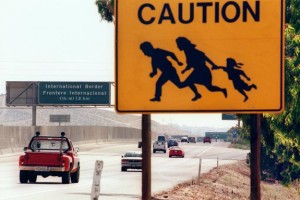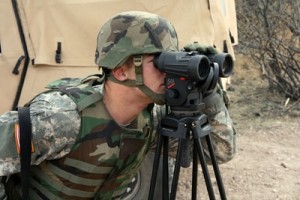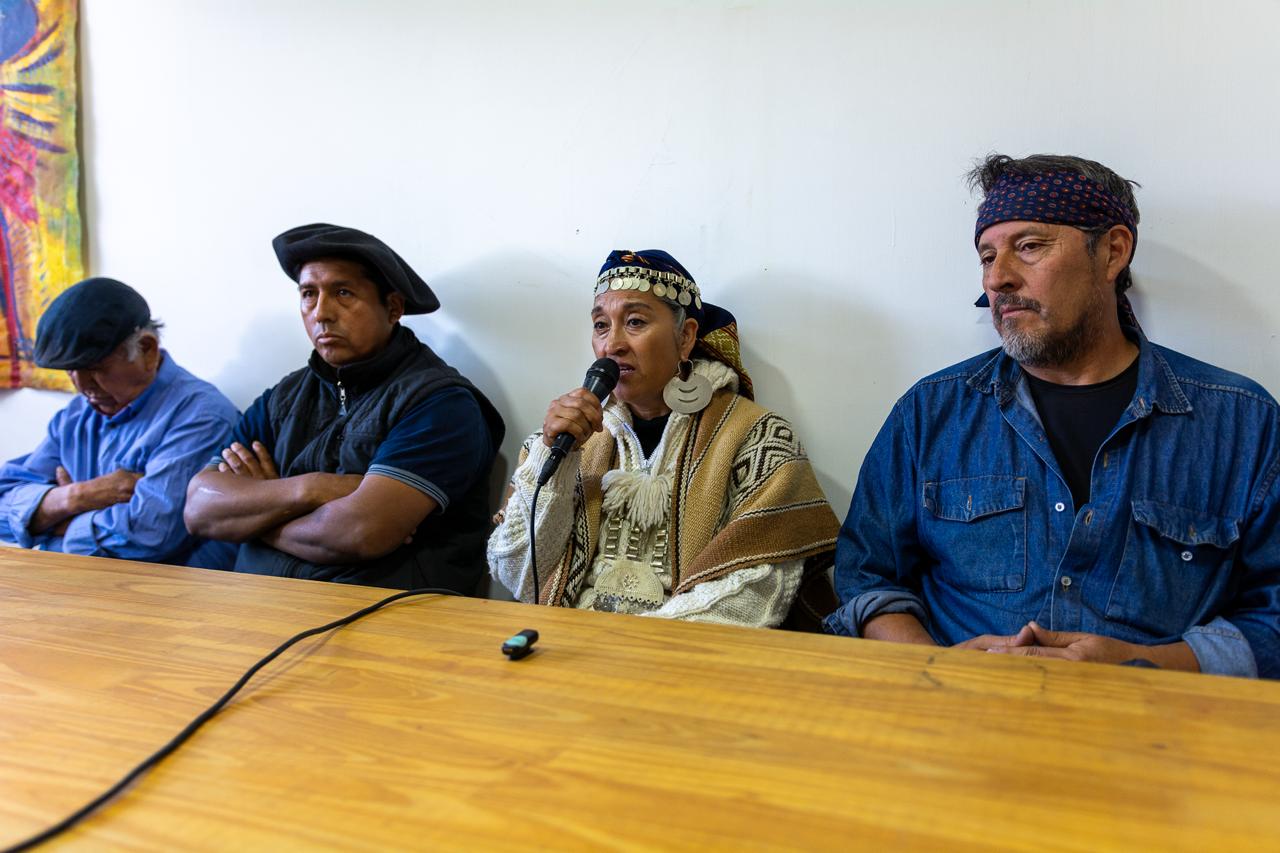Unlike Mexican border states where drug-fueled violence has been on the upswing, violent crime rates in U.S. states bordering Mexico have been decreasing for the last several years. El Paso and San Diego are rated among the safest cities in the United States. Since 9-11, no terrorist has been detected crossing from Mexico. Even detentions of border-crossers are way down, up to 90 percent in the New Mexico corridor alone, according to media reports.
“If you look at the facts, the border is more secure than ever,” headlined a recent op-ed by Homeland Security Secretary Janet Napolitano. So what would be the Obama administration’s next border initiative? Call out the National Guard and toss another $500 million at “border security.”
To the casual observer, the policy might seem curious to say the least, especially at a time when border states are laying off public workers or slashing their wages, cutting back on social services, closing down parks, and raising college tuitions. But in a key election year, U.S./Mexico border politics are increasingly driven by a toxic combination of whipped-up hysteria, old-fashioned xenophobia and outright political opportunism, according to leading border community activists and analysts.
“There is no crisis here. In fact, it’s quite the opposite,” said Andrea Guerrero of the American Civil Liberties Union’s San Diego office. “There are no increases in crime or immigration flows that would warrant the build up of troops on the border.”
Although rumors had been floating around the immigrant advocacy community for some time that the White House was considering another National Guard deployment, the president’s May 26 announcement that he would send 1,200 troops to the Mexican border came only after the immigration issue returned to the center of U.S. politics and assumed crisis dimensions.
Enjoying a field day after the still unsolved-murder of Arizona rancher Robert Krenz, the anti-immigrant camp and politicians that support it like Arizona Senator John McCain demanded thousands of troops to a border they claim is out of control.
Obama’s decision to dispatch the National Guard constituted a “capitulation to extreme right-wing politics,” said Pedro Rios, director of the American Friends Service Committee, a US-Mexico border program in San Diego. According to Rios, a White House staff member warned immigrant advocates in a recent meeting to be “prepared for a long and hard summer.”
“It’s unfortunate that the border has become a pawn in a political game,” Guerrero added.
If the White House’s intention was to appear tough on border security in order to win Republican support for immigration reform, without having a quid pro quo, the political gamble failed miserably. Predictably, no immigration reform legislation has materialized even as the absurdly expensive and dangerous security build-up advances at an unprecedented rate.
Trading Away Common Sense
“This is really a stupid way to make a compromise,” said Dr. Tim Dunn, associate professor of sociology at Maryland’s Salisbury University and an expert on U.S. border security policy. “Then you have no leverage. It’s really stupid politics.”
Interviewed on NPR’s Latino USA, former National Council of La Raza head and current White House deputy Cecilia Muñoz denied politics was the main motivator for calling out the Guard. Reiterating the president’s position, Muñoz insisted the focus of the Guard deployment would be halting illegal drug and cash shipments, not immigrants.
“Our work on the border isn’t cutting political deals in the end,” Muñoz said, adding that Obama too was frustrated with the pace of immigration reform. “If it were a question of (presidential will) alone, we’d be done with it,” she stated.
Leading Democrats lined up behind Obama’s National Guard decision, including supporters of immigration reform like New Mexico Senators Jeff Bingaman and Tom Udall.
Arizona Democratic Congresswoman Gabrielle Giffords was almost gleeful. “Arizonans know that more boots on the ground means a safer and more secure border,” Giffords said in a statement. “Washington heard our message.”
Picking up the same bash-the-border hammer wielded by McCain, the Arizona lawmaker promised to goad her state’s Republican senators into speeding-up the delivery of border security funds by attaching it to Afghanistan and Iraq war supplemental funding, which comes in borrowed billions.
Objectively, many Democrats now find themselves on the same side of the border security fence as restrictionist groups like Americans for Legal Immigration PAC (AILPAC), which demanded National Guard troops on the border back in March. “The war in Mexico is already upon us in America,” said William Gheen, the organization’s spokesman.
Consciously or not, hauling out the National Guard and paying for it out of a bloated war budget reinforces a xenophobic atmosphere shrouded in anti-immigrant rhetoric that is growing shriller by the day as racists and restrictionists employ inflammatory language peppered with words like “invasion” and “war.”
Taking the microphone at popular progressive radio host Ed Schultz’s recent “American Workers Town Hall” in Madison, Wisconsin, a man railed against “foreign flags” flying in the country and advocated starving out immigrants to “take our country back.” In an only slightly more direct way, e-mails reportedly circulating in Arizona urge readers to take back the state from “the Mexicans.”
Few recall that it was the United States that took Arizona from the Mexicans in the first place.
The Costs of Militarization
Sending the National Guard and other troops to the US-Mexico border is not new. Border scholar Dunn noted a creeping militarization of the region from 1990 to 1997, but said the trend slowed down after the 1997 shooting death of Texas goat-herder Ezequiel Hernandez Jr. by U.S. marines.
The incident, which sparked a major lawsuit, temporarily sapped the Pentagon’s enthusiasm for border duty, according to Dunn. The author of articles and books on border militarization, Dunn closely watched the 2006-2008 deployment of 6,000 National Guard troops during the Bush administration’s Operation Jumpstart.
Dunn said he did not document any abuses like the Hernandez killing, but recalled that a member of a National Guard unit assigned to the border at the time later told the Maryland professor that his unit was under orders to “shoot to kill” in case a suspect tried to run. The border scholar is concerned about the future potential for more Ezequiel Hernandez-like incidents.
Untrained in civilian law enforcement, many of the troops in the upcoming deployment are likely to have served in Iraq or Afghanistan or both, countries with brown-skinned people and a landscape not all that different from the US-Mexico borderlands. Post-traumatic stress syndrome suffered by troops serving in the War on Terror, which could eventually surpass the rates afflicting Vietnam veterans, should be taken into account in the National Guard deployment, Dunn said.
Still, the National Guard is a small component of the larger security apparatus that has arisen on the U.S. southern border. Quadrupled in size during the last five years, nearly 90 percent of the 20,000 existing Border Patrol personnel are now stationed on the southern border, according to the ACLU.
Additionally, 6,000 Customs and 5,000 ICE agents are active in the region, according to the civil liberties group. The numbers do not include FBI, DEA, ATF and other law enforcement agents who are assigned to often duplicate drug interdiction, immigrant smuggling, arms trafficking and other missions.
Unarmed Predator drones are now reportedly flying over the US-Mexico border, with plans to add more of the small planes costing $10-12 million each in the coming months.
On the ground, Secretary Napolitano vows to finish the costly and controversial border wall; it remains to be seen if the construction will satisfy Arizona’s Governor Jan Brewer, who demands the modern-day equivalent of a moat between her state and Mexico. In a phone conference with reporters, the University of San Diego’s Dr. David Shirk, lead researcher for the Trans-Border Institute, asserted that the “border will never be secure enough” for some people including legislators who essentially seek to erect a “glass dome” over the United States.
The federal security presence along the border is “unprecedented,” Shirk said, and greater at any time since the 1910 Mexican Revolution when fears of spillover violence also gripped the US. Shirk questioned how much money and resources could be expended on border security until the point of diminishing returns is reached. Meantime, he said, a “phantom menace” of exaggerated or non-existent violence conjured up by some politicians incentivizes investments in the “border-industrial complex” of fences, high-tech surveillance aircraft and other gadgets.
“I guess there is no limit on what they will spend on border enforcement for political ends. It’s pure theater.” Dunn commented. “As long as it’s framed as a security issue, it’s bullet-proof.”
According to San Diego activists Rios and Guerrero, a border security state has meant restrictions on freedom of movement due to multiple checkpoints, roving patrols through neighborhoods and more stops of residents, including many citizens. A high turnover of young, inexperienced agents, and deadly run-ins like the death of Mexican immigrant Anastasio Hernandez after a confrontation with Border Patrol agents at a border crossing last month, are other ingredients of a volatile situation, Guerrero contended. What’s more, the use of a military force like the National Guard to enforce civilian laws such as drug prohibition is a troubling development, she said.
Only days after Anastasio Hernandez died, a Border Patrol agent shot and killed Sergio Adrian Hernandez Huereca, a 14-year-old resident of Ciudad Juarez, in an alleged rock-throwing incident on June 7 on the borderline of El Paso and Ciudad Juarez. The Chihuahua state government demanded a “full investigation” into the “regrettable incident.” A multi-agency US law enforcement team including the FBI is probing the shooting.
In a broader context, the National Guard deployment could be viewed as part of an incremental but steady trend of restricting personal liberties that first resulted from the Drug War, then the War on Terror and now the New War against Immigrants. Torture, warrantless wiretaps, political spying, employment and school-related drug testing, checkpoints, and proposals for a national identify card are among the bitter fruit falling from the entangled branches of Washington’s endless wars. So are contraband smuggling and corruption.
Boosters of the “more boots on the ground” approach rarely mention the growing cases of corruption involving U.S. border security personnel. Among notable examples were the arrests of National Guardsmen in Arizona and Texas accused of drug and immigrant smuggling during Operation Jumpstart, or the largely hushed-up 2009 murder case in which an active-duty soldier stationed at Ft. Bliss was accused of killing a reported ICE informant at the behest of another ICE informant allegedly on the payroll of the Juarez cartel. The shooting happened in a residential neighborhood where El Paso police Chief Greg Allen lived.
Adding injury to insult
For a network of immigrant and human rights organizations, Obama’s National Guard deployment is the final straw during a time when the promise of comprehensive immigration reform is fading and deportations with their attendant family break-ups increasing. In a letter to the President and leading members of Congress, a dozen groups from all four border states declared the administration’s current policies “may even be worse” than the Bush administration’s. “Our economies are choked by inefficient border crossings, our civil rights are pushed aside, and our quality of life seriously diminished,” the letter stated.
Signatories included the American Friends Service Committee, San Diego Immigrant Rights Consortium, First Christian Church of Tucson and the El Paso-based Border Network for Human Rights, among others.
The letter proposed a nine-point program for a new border security policy, emphasizing “quality” over “quantity” law enforcement. According to the authors, other overdue reforms must include greater government accountability, facilitating the movement of people and goods, upholding international civil and human rights protections and promoting economic development in Mexico.
Organized by the Border Network for Human Rights, about one hundred people staged anEl Paso demonstration against the National Guard deployment on May 27. Louie Gilot, the network’s communications director, said the letter and public protest were the beginning of a “border-centered push-back” to reclaim the debate on the future of a binational region where millions of people live, work and play.
Gilot said it was time for U.S. policy-makers to stop calling out the National Guard every other year or so and start effectively targeting organized crime instead of scapegoating immigrants. “I hope we can break out of this cycle,” she said, “and recognize that this isn’t the military’s job.”
In Dunn’s view, the White House’s bungling of the immigrant/border security issue cannot be divorced from the bigger failure of the Democrats to address issues of mutual concern to workers on both sides of the border, including the need to renegotiate NAFTA, pass legislation that would make it easier for workers to join unions and pursue policies that favor a vibrant working-class.
“Having a Democrat in office has meant absolutely no change on this topic. None,”
Dunn said. “I think it’s Bush lite. It’s very similar, somewhat scaled back.”
Kent Paterson is a freelance journalist who covers the southwestern United States, Mexico, and Latin America. He is an analyst for the Americas Program at www.americas.org
For more information:
Arizona’s Brown Codes: A Generation’s Fight – By Kent Paterson
https://www.americas.org/archives/2481
The Shadow Prison Industry and Its Government Enablers
https://www.americas.org/archives/1995
Profits, Poverty, and Immigration Converge





